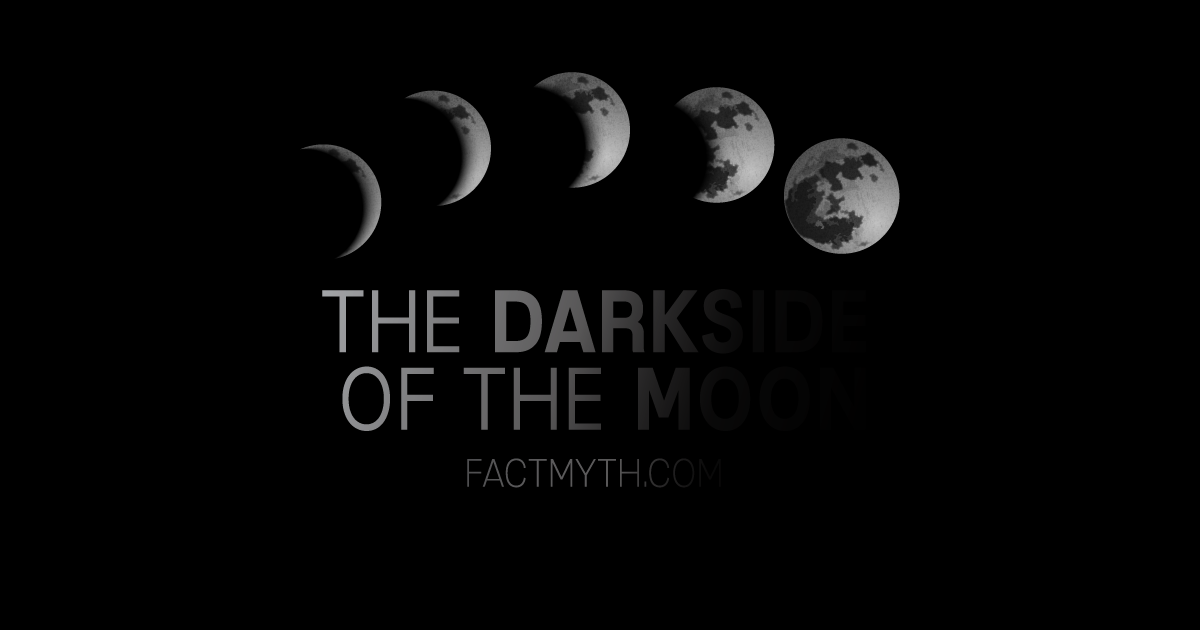The dark side of the moon is just like the other side. From our perspective we don’t see the “far side” of the moon, but that doesn’t mean it’s actually dark.
The Dark Side of the Moon Is Always Dark myth

Is the Dark Side of the Moon Actually Dark?
The “Dark Side” of the moon is not actually dark. Every month, it gets two weeks of sunlight and two weeks of darkness, just like the rest of the moon. However, due to the earth’s gravitational influence on the rotation of the moon, the moon circles around the earth in the same amount of time it takes for it to rotate about its axis. As a result, the dark side (or far side) is the hemisphere of the moon that will never be visible to earth.
The Secret of the Dark Side of the Moon. I know, I know, you want to say Richard Wright… but it’s actually gravity. Heavy right?FACT: The far side of the moon isn’t visible from earth, but that doesn’t mean it’s always “dark”. It gets the same amount of sunlight as the other side.

What is the Dark Side of the Moon
The “dark side” – or more accurately, “far side” – of the moon is the hemisphere of the moon facing away from earth. Despite this, the idea that this side of the moon is always “dark” is inaccurate. In reality, the only time at which the dark side of the moon is entirely unlit is during a full moon.[3]
Over the course of a about a month, the moon rotates around the earth. The amount of time this takes is called its orbital period. However, like the earth, the moon also rotates about its axis. Interestingly enough, the amount of time it takes for the moon to make one full rotation (its rotational period) is roughly the same as its orbital period.[1]
Because of this, as the moon rotates around the earth, it also rotates around its axis in such a way that the same side of the moon is always facing the earth.
Half of the moon’s surface is always illuminated by the sun, except during a lunar eclipse when the earth blocks the sun’s light from reaching the moon. So, if you look up at the night sky and see a half-moon, you are seeing half of the far side of the moon and it is illuminated. When you see a new moon, that means the far side of the moon is completely illuminated.
Here is the actual moon landing footage. Armstrong stepped off Eagle’s footpad and declared, “dang dude it’s dark up here, where is the light switch, put on some Floyd.” Ha, sorry, enough jokes. He said, “That’s one small step for [a] man, one giant leap for mankind?”How the Earth Affects the Moon
It’s actually because of earth’s gravity that there is a far side of the moon.
Millions of years ago, the moon’s rotational velocity was much larger than its orbital velocity – it spun around its axis much faster than it does now. The earth and moon exert a gravitional pull on each other. As a result, over the course of millions of years, the earth’s gravitational influence slowed the moon’s orbit to where it is now. The moon’s gravitational influence causes tides on earth.[2]
How Much of the Moon Can We See?
The orbital period and rotational period of the moon aren’t exactly the same. In fact, because of the elliptical shape of the moon’s orbit, its orbital velocity varies depending on how close it is to the earth.[1] This difference between the moon’s orbital and rotational periods means that, during every moon cycle, we get little glimpses of the far side of the moon from earth.
So, technically, the “dark side” of the moon is smaller than the “light side” – we can actually see 59% of the moon over time.[1]What’s on the far side of the moon? Well, mostly craters and rugged landscapes. Notably, this includes the largest crater – the South Pole-Aitken Basin.[4]
- “Why Do We Only See One Side of the Moon?“. Moonconnection.com
- “Understanding The Moon Phases“. Moonconnection.com
- “Far side of the Moon“. Wikipedia.org
- “South Pole–Aitken basin“. Wikipedia.org
